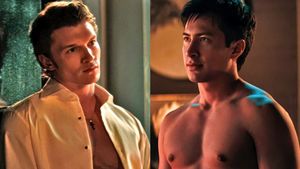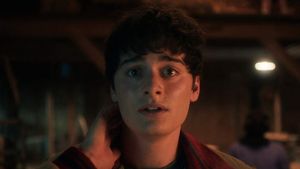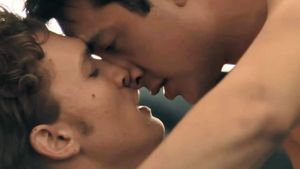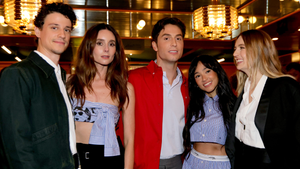As a kid, comic books never had much of an appeal to me. Superheroes seemed boring and what all the other boys were into (you know, the ones who played soccer at recess while I played tag with the girls). Harry Potter was more my interest, and there was just something about a boy who lived in a closet that appealed to me much more (I wonder why).
But now the superheroes I ignored as a kid are nearly impossible to get away from, and what’s more is that I have no desire to. I’ve fallen in love with the worlds being built. I’m all in, and I genuinely enjoy it. The only thing missing? Someone who is like me. Someone who is queer.
It’s not a big secret that there are some very queer stories hidden within superhero narratives. The X-Men spring to mind immediately while talking about the queer experience. A group of people who otherwise look like everyone else, but are deemed abnormal by those in power? That certainly is familiar to any kid growing up in the closet. In fact, it was in an X-Men comic that one of the first queer heroes, Northstar, appeared in 1979. However, being an allegory for queer people and actually being queer are two very different things. Plus, if you ask someone who has only seen the many X-Men movies who Northstar is, they’ll probably just give you a blank stare.
Northstar is far from the only queer comic book character. In fact, there are plenty of queer characters that almost anyone would be able to name, they just don’t know that they’re queer—and that’s part of the problem.
The biggest name in superheroes right about now is Wonder Woman, an Amazon warrior who comes from an island inhabited exclusively by women. The recent live-action adaptation has been a huge Hollywood success, though it took quite some time to finally see Diana Prince (or any other female hero for that matter) lead a film, coming nearly a decade after Iron Man, arguably the beginning of our current superhero obsession. If the studios were so hesitant to make a female-fronted superhero blockbuster, think how much they would balk at the idea of a queer superhero blockbuster...
Of course, Wonder Woman is queer. It’s just that her queerness was never referenced in the film. Greg Rucka, a writer for the Rebirth reboot of the Wonder Woman comic book, confirmed to Matt Santori of Comicosity late last year that the current incarnation of Wonder Woman is, in fact, queer. While she may not be able to be her queer self on screen just yet, Santori assured me that queer characters are certainly appearing in comic books.
"Both companies [DC and Marvel, the two publishing companies that tend to dominate the comics market] have had their slips and both companies have had some advantages," Santori explained. "But moving forward, DC has really made it a primary push that there be a lot of queer inclusion, so you see...queer characters not just being filtered into the backgrounds of comics, but having leads in their own books. Characters like Midnighter and Batwoman and Mother Panic all have their own titles."
While inclusion in books may be on the rise, readership of comic books is much smaller than the audience for superhero movies, and while it’s great to see Midnighter and Apollo take down the bad guys and then get in bed together on page, it would mean a whole lot more to be able to see it on the big screen.
Movies are not the only way we get to see heroes on screen. On The CW alone, there are currently four superhero shows running, with a fifth on its way. Amazingly, each one of the four shows currently on air has at least one queer character. One of those characters, Sara Lance, was the first character from both Marvel or DC to be portrayed as explicitly queer on screen when she kissed Nyssa al Ghul on Arrow, came out as bisexual, and headed over to DC’s Legends of Tomorrow to become captain of the Waverider.
On Supergirl, Alex Danvers (sister and confident to the titular heroine) came out as a lesbian in season two and proposed to her girlfriend at the end of the season, a refreshing change of pace to the typical "Bury Your Gays" trope that tends to plague lesbian characters. Alex may not have superpowers of her own, but it’s nearly impossible to claim she isn’t a hero on the show.
[iframe https://giphy.com/embed/qoVAkMkJvoMrC allowfullscreen="" class=^{{"giphy-embed"}}^ frameborder="0" height="235" width="480"]
Both of these women are much more than simply side characters or window dressing, they’re central characters with fully fleshed out lives beyond the fact that they’re queer, which is what makes each of them so great.
If we can get the characters in books and characters on TV shows, certainly it’s time we get them in films. Let’s just hope it doesn’t take us another decade of films to get us there.
































































